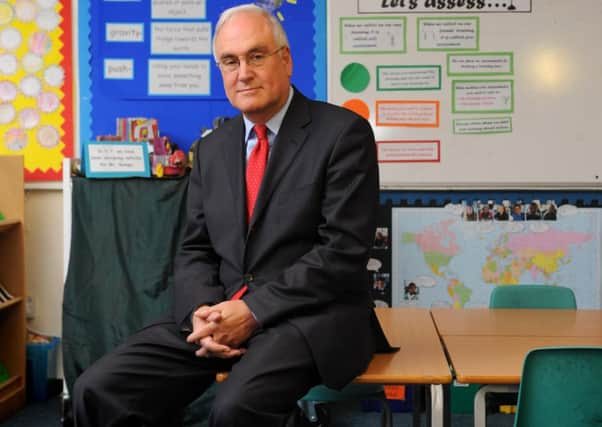Sweeping changes as good schools face more regular inspections


Leaving up to seven years between inspections is too long to spot declines in standards, Sir Michael Wilshaw said, as he announced sweeping proposals to overhaul the system.
Under the plans, from next September, English state schools rated as “good” by the watchdog will get shorter, more frequent, inspections every three years.
Advertisement
Hide AdAdvertisement
Hide AdThese visits - lasting a day and a half - will check schools are still performing well, identify any weaknesses and make sure that headteachers have a plan to deal with them, Ofsted said.
If serious concerns emerge about a school then inspectors will call for a full inspection.
Announcing the reforms, Sir Michael said that more than 60 per cent of schools are now considered good or better, but added he was still worried about those that decline in performance.
“It’s absolutely essential that we build on these improvements and we do not let standards slip back,” Sir Michael said.
Advertisement
Hide AdAdvertisement
Hide Ad“And there is a danger that this might happen. 860 good schools that we inspected in the last reporting year, attended by over 300,000 children, slipped back from good to less than good, either into requires improvement, or worse, into special measures.
“That’s what I’m really worried about. As we all know, particularly where there’s fragility in schools and fragility in the leadership of schools, decline can set in very quickly. It doesn’t take long for schools to slip.”
The chief inspector said that Ofsted had learnt from its inspections of schools linked to the alleged Trojan House takeover plot by hardline Muslims in Birmingham, that when outstanding teachers left, or were pushed out, standards slipped “within months”.
“We believe that five, or even seven years where its a converter academy, between inspections is too long to spot decline.
Advertisement
Hide AdAdvertisement
Hide Ad“It’s too long for improving schools to wait for an outstanding judgment,” he said.
“And it’s too long for parents to know whether the rot has set in and whether standards are declining.
“It is very important that we champion the rights of parents, and children, to know that things aren’t as good as they should be.”
Under the plans, which have been published for consultation, schools that are considered good after their three-year visit, will not get a full inspection.
Advertisement
Hide AdAdvertisement
Hide AdSir Michael insisted that the shorter checks will be “rigorous and demanding”.
“These will not be drive-by inspections or data-based inspections,” he said.
The three-year inspections will report on whether a school is still considered good, but will not give a full set of grades on each of the four areas Ofsted look at, such as quality of teaching and leadership and management.
The shorter visits will involve inspectors spending one full day in a school, with the second half-day spent talking to governors, staff and parents.
Advertisement
Hide AdAdvertisement
Hide Ad“Culture is everything, going into a school, you can spot a good school within half an hour,” Sir Michael said. The culture is good, the leadership is good, people are busy in the classroom, children are focused and energised and a really getting on with their work. You can spot that very quickly.”